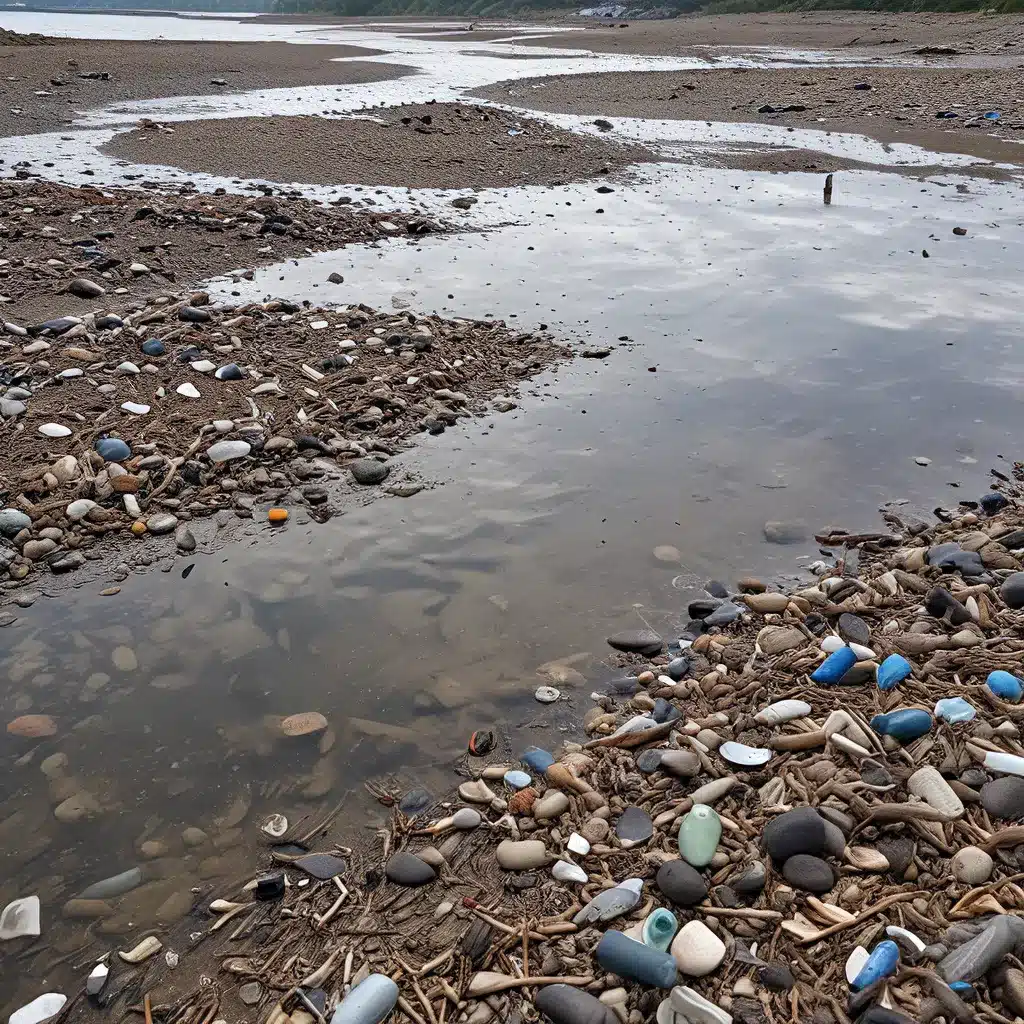
As an environmental enthusiast, I’ve always been fascinated by the invisible threats lurking in our water systems. And when it comes to the scourge of microplastics, let me tell you, this is a battle that’s been raging for far too long. But fear not, my friends, for I’m about to dive headfirst into the world of wastewater treatment and uncover the strategies that just might be the key to a cleaner, brighter future.
Unraveling the Microplastic Enigma
Let’s start by taking a closer look at these pesky microplastics, shall we? These tiny, ubiquitous particles have been making headlines for all the wrong reasons, infiltrating our waterways, our food supply, and even our very own bodies. According to the California Ocean Protection Council, microplastics are defined as plastic particles smaller than 5 millimeters in size, and they come from a wide range of sources, including synthetic clothing, tire wear, and the breakdown of larger plastic items.
Now, you might be thinking, “But wait, how do these microscopic pieces of plastic even end up in our water supply?” Well, my friends, it’s a story as old as time (or at least as old as the invention of plastic). You see, when we wash our clothes, those tiny synthetic fibers get flushed down the drain, making their way into our wastewater treatment plants. And that’s just the tip of the iceberg – microplastics can also come from the weathering of plastic products, the erosion of tire particles, and even the breakdown of larger plastic waste.
The Wastewater Treatment Challenge
So, how exactly do we tackle this microplastic menace? Well, the truth is, it’s not an easy fix. The European Commission’s Zero Pollution Action Plan highlights the urgent need to address pollution in all its forms, including the growing threat of microplastics. But the challenge lies in the sheer diversity and pervasiveness of these tiny particles.
Imagine trying to catch a swarm of gnats with a butterfly net – that’s kind of what we’re up against when it comes to removing microplastics from our wastewater. Conventional treatment methods, such as sedimentation and filtration, can capture some of the larger plastic particles, but the smaller ones often slip through the cracks.
Innovative Solutions on the Horizon
But fear not, my friends, because the water treatment industry is stepping up to the plate with some truly ingenious solutions. According to the California Statewide Microplastics Strategy, researchers are exploring a range of cutting-edge technologies to address this challenge, from advanced filtration systems to innovative chemical and biological treatments.
One promising approach is the use of membrane bioreactors, which combine the power of biological treatment with high-performance membrane filtration. These systems can effectively remove a wide range of microplastics, from tiny fibers to larger fragments. Another intriguing solution is the application of coagulants and flocculants, which can help aggregate microplastics into larger, more easily removable particles.
And the innovations don’t stop there. Some researchers are even exploring the potential of biological treatment, harnessing the power of microorganisms to break down or capture these stubborn plastic particles. Imagine a future where tiny, hardworking bacteria are our allies in the fight against microplastic pollution. It’s like something straight out of a sci-fi movie, but the reality might just be even more fascinating.
Navigating the Road Ahead
Now, I know what you’re thinking – this all sounds great, but what about the real-world implications? Well, let me tell you, the path forward is not without its challenges. Implementing these cutting-edge technologies requires a significant investment of time, resources, and expertise. And let’s not forget the ever-present obstacle of public perception, where some may be skeptical of these new and unfamiliar solutions.
But I firmly believe that where there’s a will, there’s a way. And when it comes to protecting our precious water resources and safeguarding our environmental future, the will is certainly there. Companies like Inland Waters Inc. are leading the charge, investing in research, development, and the deployment of these game-changing wastewater treatment strategies.
It’s going to take a concerted effort from policymakers, industry leaders, and concerned citizens like you and me, but I’m confident that we can rise to the occasion. Together, we can combat the scourge of microplastics, ensuring that our waterways are clean, our ecosystems are thriving, and our future is bright.
So, what are we waiting for? Let’s dive in, roll up our sleeves, and get to work. The cleaner future we all deserve is within our grasp, and I, for one, can’t wait to see what we can accomplish.


